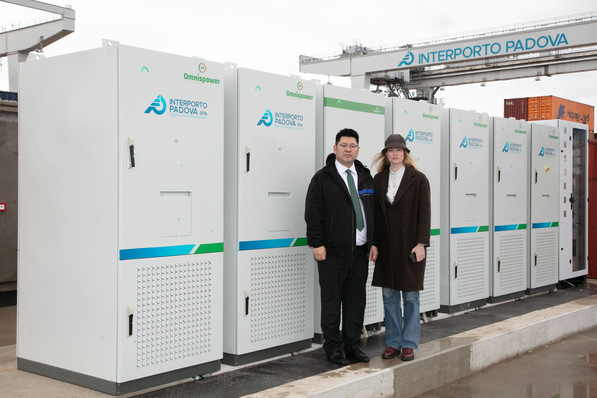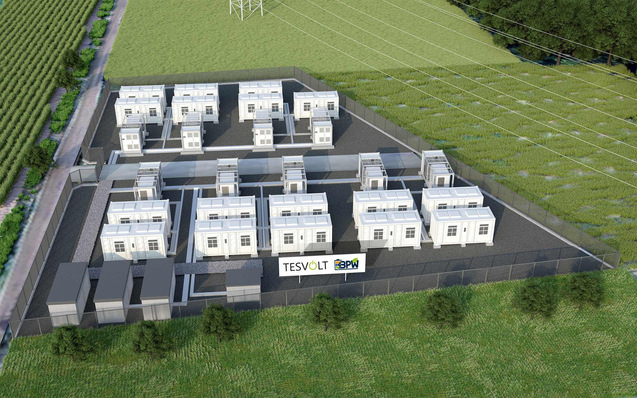You introduced the new Resu storage units last summer. Now they are going on sale. How is that working out?
Santiago Senn: In Europe we will at first concentrate on three key markets: Germany, Italy and the UK. By the end of 2016 we are going to have sold about 2,000 new units. That is quite remarkable – considering we exclusively distribute through specialised wholesalers and utilities.
Is it the same sales model for all countries?
In Germany, we have a business relationship with almost all important retailers: Baywa r.e., Krannich, Memodo, EWS, IBC Solar, Viessmann and others. In the UK we are also in a cooperation with Lightsource, a project planning company for large-scale solar parks. However, as there no longer are feed-in tariffs for greenfield PV installations, it will become difficult for large-scale parks, and so Lightsource, together with EDF, has started offering a PPA deal: In return for providing their roof space for the solar panels and room in their basements for a storage unit, customers will get a lower electricity tariff. There is no need to invest in technology, the PV and storage is financed and operated by Lightsource. I think this is a promising concept and very much look forward to seeing what results it will yield.
Which Resu storage units see the greatest demand?
Distribution is just getting under way for us. Currently, only the small 3.3 kilowatt hour low-voltage units using 48 volts are available. During September, the larger units of 6.5 kilowatt hours will be delivered. In late autumn, the large low-voltage units of about ten kilowatt hours and the high-voltage series will be introduced. All units come to Europe from Korea, and for this year, all are either reserved or already sold.
So the market calls for more units than you can supply?
Fortunately, we were able to increase this year’s shipments from Korea. We can supply more units than we had originally planned – and are just about able to catch up with demand. The new Resu generation has demonstrated two things: It allows the specialist retailers on the German market to position themselves and have a competitive advantage. And in the UK and Italy, new customer groups have emerged that we had so far not been aware of.
Such as?
We always start by asking the question: What are the incentives of our customers for installing storage units? And if we cannot find a clear answer, there probably is no mass market. In Germany, the storage market has already picked up. Generally speaking, storage is installed to increase the self-consumption of solar electricity. In 99 percent of cases, storage is combined with PV in order to reduce the electricity bill with the local utility.
What mechanisms effect the Italian market?
In Italy, the difference between the feed-in tariff for solar electricity and the price for grid power also is considerable. That would favour storage, especially because compared to here, solar installations generate more electricity due to stronger solar irradiation. Also, half of any investments made in PV and storage is tax-deductible over ten years. That makes storage more and more interesting. Economically, PV currently still has the edge, but the storage market is growing fast.
Why should UK customers install solar storage units?
In the UK the difference between the feed-in and grid tariff is also relatively high. But even when just consuming grid power, it is possible to choose between two tariffs: day and night. So with a storage unit, end customers can take advantage of being able to buy in electricity cheaply during the night, storing it and then consuming it during the day. And this is independent of whether they have solar or not. In France, demand is slowly developing, particularly in the oversees departments and islands such as Reunion, Martinique or Guadeloupe. The power grids there are very unstable, which is why customers there are increasingly asking for back-up solutions involving storage.
Which European markets have the potential to generate significant demand for storage in the near future?
We will have to see. For now, we are aiming to adequately supply the three core markets that I have already mentioned. To correctly judge a market, it is always important to see it from the perspective of the end customers. Also, storage continues to get less expensive. I am sure that the falling prices in each country will eventually come below a certain threshold where that market becomes interesting.
How do you see the competitive situation in the European storage market?
Until recently, the market was very diverse, involving a relatively large number of suppliers. However, the recent Intersolar has already shown that the market is consolidating. Now the overall market is growing, while the number of suppliers is coming down. Sony sold their storage segment to a Japanese company, and Samsung was not even represented in Munich.
Will the battery cell become the strategic asset in the storage market, as is already common in PV? Only a company using superior solar cells can build the best solar panels.
Obviously. The other system integrators will need a cell as good as our JH3. So it will become ever harder to keep up with our storage units. The battery cell is the strategic component in the storage market, which is why we stay with the hardware side of storage. Unlike some of our competitors, rather than offering operational reserve or cloud solutions in combination with our Resu products, we collaborate with companies that already do this.
You mentioned France’s oversees territories. What is your view on the markets outside Europe?
To us, Japan, the US and Australia are key markets. In Japan, business is going similar to here in Germany. Because of the electricity prices, and the way they are structured, using electricity storage actually pays off in Australia. On the other hand, there are not that many people living in Australia, so that market should be saturated fairly quickly.
And in the United States?
As in Europe, the US are comprised of a number of individual markets. As far as domestic storage is concerned, Hawaii is very promising. Electricity prices are even higher than in Germany, and as a result of the strong solar irradiation, PV generates more electricity compared to here. There it is all about increasing self-consumption. In California, back-up systems play a key role. Many suppliers like Solar City, for instance, offer leasing schemes, although these seem not to be taken up too well.
What is your roadmap for the technological evolution of the JH3 cell and storage units?
We are already working on the next generation. The cell is our core product, where we are benefitting from the developments in the automotive industry. Our domestic storage team is something of a little brother to the automotive team which keeps developing the cells for the automotive sector.
When can we expect the next generation?
Our R&D department is constantly working on the technological improvement of our storage units, which allows us to bring out new cells every two to three years. The JH4 will constitute another significant leap forward as far as energy density is concerned. Whether it will again be a two-fold increase, as was the case with the transition from JH2 to JH3, I cannot say at this point.
How will that affect the price of storage units?
Naturally, better efficiency and greater energy density bring about a reduction in price. A second factor for lowering the cost per unit of the cells and storage units is volume of production. We are expecting the price of storage to keep falling over the coming years. For the time being, our current price list will be valid until the next Intersolar.
What role will the security of the storage units’ IT play, i.e. with respect to hacker attacks?
To us, that already is a very important issue. Our 48-volt series does not even have an Internet connection. The updates come in the form of an SD card which the technician inserts by hand to install the latest version of the firmware. For the high-voltage units, the update is done through the inverter, which actually is connected to the Internet. A firewall or something like that for the battery management system is not provided. And we do not see the need for it, because the units only transmit data on their operational status to the inverter. The actual control of the battery, i.e. its intelligence, is part of the inverter. This could be SMA’s new Sunny Boy Storage 2.5, specifically designed to work with high-voltage batteries. Our Resu storage units are also compatible with the power electronics of Solaredge. As of 2017, we further intend to have it functioning together with Fronius’ Symo Hybrid.
How will the low-voltage units be controlled?
We have a list of battery inverters that are officially compatible with our system. Of course, that includes SMA’s Sunny Island, but also equipment from Sungrow, Solax, Goodwe, Ingeteam, Victron or Schneider. We look at the markets in question and then decide which inverter manufacturers would be good partners for us. Since it is in fact the inverter that controls the battery, it is a key factor when it comes to its behaviour at partial load.
The interview was conducted by Heiko Schwarzburger.
Read more on storage business:
Energy storage: our insight stories at a glance
Energy storage: our expert’s interviews at a glance
Energy storage for commercial use: all reports at a glance
Energy storage: costs, prices and finance at a glance







